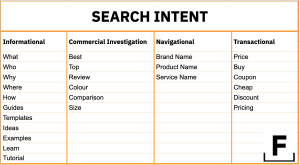Politics
How To Livestream Your New Product Launch
Published
2 years agoon
By
Drew Simpson
Companies must coordinate a successful product launch when bringing a new solution to the market. In the past, this meant hosting a live event or buying advertising space on television or in industry-related magazines. However, today’s digitized world calls for a more engaging product launch experience that allows both loyal customers and prospects to learn more about the solution and interact with the company in real-time.
Livestream product launches are a great way to increase brand visibility and drive sales. With video marketing strategies only rising in popularity, it is a no-brainer to continue this trend. Research by Wyzowl shows that 88% of people have been convinced to buy a product or service after watching a company’s video. In addition, the same study reports that 73% of people prefer learning about new products from short video content rather than text articles.
While prerecorded video content is already successful, livestreaming adds something fresh to the mix. It allows creators to hear from their customers directly, answer their questions, and drive home their company’s core values live. In addition, Livestreaming will enable viewers to feel more connected with the brands they support and create an incentive to buy their products.
But to create a successful livestream product launch, long-term planning is a must. It takes a strong marketing campaign, a catalog of content, and confident use of today’s technologies to try this new avenue of promotion.
This is your step-by-step guide to streaming your product launch to the world successfully.
Part I: Before the Stream
Research Your Target Audience
The first thing you need to do when planning your livestream product launch is to research your target audience. Analyze your already existing followers, as well as the personas you are planning on targeting.
From online behaviors to everyday habits, gather as much data as possible by asking specific questions. For example, where do your prospective buyers shop? What are their favorite social media platforms, and at what times do they scroll? What kind of content keeps them engaged?
The more answers you have to these questions, the better prepared you will be to plan out your stream.
Pick Your Platform—or Platforms!
Now that you know who your target audience is and where they go to consume content, it is time to pick the platform that will most effectively reach this audience. Again, brands have many options, and most social media platforms have a livestreaming component.
Pick the platform where most of your followers gather and connect daily. You want to ensure that your livestream is convenient and comfortable for them to access. Choosing a livestream platform that fits your brands overall messaging is also essential. For example, if you are promoting a product for the entertainment space, Twitch could be a great choice. If you are launching a solution for B2B companies in the tech world, try LinkedIn Live.
What if your audience is spread out across several social media platforms? Multistreaming is an excellent solution for companies that want to expand their reach to every medium possible. Livestreaming applications that support multistreaming, like Switcher Studio, allow brands to share the same live feed to multiple channels simultaneously, including Facebook Live, YouTube, Twitch, and more. One study shows that 65% of live-stream companies who livestream have also had multi-streamed before. An integrated solution like this means you do not have to choose.
Schedule Your Stream and Work Backward
It’s time to pick the day and time of your livestream product launch. First, you want to ensure you go live when your followers are available and engaged. Next, pay attention to your prospects’ time zones and align them for a successful worldwide stream.
You also want to ensure you give yourself enough lead time to promote and market your virtual event. (We will go over this next.) Make sure you budget time to tease the event, prepare new content, seek out PR opportunities, and promote the livestream product launch. It is never a good idea to rush into any event, so give yourself enough time to plan.
Of course, you do not want to tease your audience for too long. Setting a product launch date three months in advance could cause your followers to lose interest or, even worse, forget about your livestream altogether. Strike a balance between creating anticipation and keeping your audience actively interested in your big launch.
Once you have nailed down a streaming date, work backward before building your marketing campaign. Use a social media scheduling tool to organize your promotion ideas. For example, decide when you want to announce the event and highlight specific days each week to share more information with your audience. This is called a breadcrumb approach.
Think of a breadcrumb as a new detail regarding your event or product. The whole point of this approach is to continue giving your followers something to look forward to so they care about your livestream launch until the day of the stream.
Build Your Marketing Campaign
Building a successful marketing campaign for your livestream launch means promoting your event through every available resource. From pay-per-click (PPC) ads to influencer marketing, there are various ways to boost your event’s visibility.
First, you should think about creating organic content that highlights the value of your products and services. From short videos to infographics, successful organic content should inspire your prospects to engage with your brand without needing paid ads or sponsored content (although these outbound marketing tactics can work great with organic content marketing).
Next, consider submitting any pre-launch materials to media outlets for press coverage. PR campaigns are a great way to increase brand visibility and boost RSVPs before a livestream event. Send press releases and organic content regarding your new product to the leading publications in your industry. A mention in an article or an exclusive interview can go a long way in turning your executives into authentic thought leaders.
Media outlets are not the only ways to cross-promote your launch to new audiences. Enlist social media influencers, colleagues, and industry opinion leaders to shout out your event and return the favor by posting about their work on your company profile. You could even invite a particular guest host to join you on your stream, providing an attendance reach that exceeds your company’s follower count.
Lastly, optimizing your marketing efforts by investing in some PPC ads is always wise. These are especially effective for reaching personas unaware of what you are offering the market.
Brand and Outline Your Stream for Success
You want your livestream to look and feel professional; you are trying to sell your new product, after all. In the past, small businesses did not have the industry-grade equipment or editing tools necessary to make their live feeds look polished. Luckily for them, the tides are changing now — nearly everyone has a pro-quality camera right in their pocket.
Today’s livestreaming applications allow companies to brand their streams with customizable features. For example, you can pick custom colors, personalize your layout with a logo, and even incorporate multimedia elements like countdown timers and polls.
Many brands take this customization one step further by using multi-angle streaming techniques. Using multiple iOS devices, livestreaming software can link different video sources to give viewers a look at your product from every angle. Test out these features to set your stream apart from your competitors.
Pay as much attention to the content flow of your launch as you do to what it looks like. Make a bullet-point outline of the different segments of your livestream and set up CTAs throughout the show to keep your viewers active and engaged. Lastly, ensure that you leave room for audience participation and Q&A sessions. Find the right mix between preparation and spontaneity.
Part II: During the Stream
The day has arrived, and you are ready to air your livestream product launch. But, before you press the “stream” button, ensure you set yourself up for success.
Double-check that your iOS devices are fully charged and that your Wi-Fi connection is strong. Test your lighting and sound before you air, and have your graphics and prerecorded content on file and ready to use. These tips may sound obvious, but forgetting one of these “obvious” steps will substantially reduce your production value and reflect poorly on your brand. In addition, 67% of livestream viewers say that video quality is most important when watching a live feed, so pay special attention to these little details.
Once you are live, the show must go on. It is time to put on your hosting hat and confidently showcase your new product. To do this, you must remain observant of each facet of your stream. This includes your comments, editing tools, and the live feed that your viewers see.
First, make sure that you interact with your participants. This means answering questions in the comments section, giving shoutouts to excited viewers, and giving them specific CTAs throughout the show. Try to personalize your interactions, so each viewer feels seen, and create an avenue for them to learn more about your company post-stream—this is best done by providing them with a way to schedule a one-on-one call. The more connected they are to your brand identity, the better.
Keep things fun and flowing by editing your livestream on the spot. A few platforms allow businesses to change layouts, add prerecorded content, and switch camera angles live. So don’t be afraid to switch things up and show your viewers a different side of your newest venture.
And speaking of fun, who doesn’t love a good surprise? Keeping a surprise or two in store for your audience is always wise. Build more incentives for your viewers to turn into buyers by offering a special on-air discount, early-bird access, or even promoting a livestream exclusive giveaway.
Part III: After the Stream
Once your stream is over, many opportunities remain to optimize your product discoverability and conversions. The best part about livestreams is that they can be archived for later use. Successful marketers repurpose their 1- to 2-hour streams by cutting them into bite-sized content assets for platforms like Instagram and TikTok. This strategy increases your stream’s longevity and proves the value of your solution to users who did not watch the stream when it aired.
Of course, you will want to nurture your leads immediately following your product launch event. One easy way to keep the momentum going is to send an individual email newsletter to your viewers that ties to the livestream—including screenshots from the stream, references for funny moments or flubs, and other highly personalized references—and ends with a CTA that leads them directly to a purchase page. It could also include a discount code or a special thank-you gift.
Use this guide to begin planning your first (or next) livestream product launch. Whether you are new to the game of streaming or completely comfortable with the tech, allow yourself to get creative with this marketing strategy. Creativity is vital when bringing a new product into the market, and a well-planned livestream could be the perfect introduction.
Featured Image Credit: Photo by Pixabay; Pexels; Thank you!
Nick Mattingly
Nick Mattingly, CEO, and Co-Founder, Switcher Studio
Nick is a livestreaming and social video expert and leads the Switcher Studio team as CEO, and Co-Founder. Since 2014, he has led the company to partnerships with Facebook Live, LinkedIn, Microsoft Stream, and beyond and has garnered features in TechCrunch, USA Today, Inc. Magazine, and BBC. Nick is a FastCompany contributor, and also a member of the highly competitive Endeavor Entrepreneur network.
You may like
-


Deepfakes of Chinese influencers are livestreaming 24/7
-


The deepfake avatars who want to sell you everything
-


iPhone 15 models could be available in India on launch day for the first time
-


How to Launch a Website Design Business
-


Revamping Product Strategy: A Necessity for Manufacturers
-


Product-Led Content: Weave Your Product into SEO Content
Politics
Fintech Kennek raises $12.5M seed round to digitize lending
Published
7 months agoon
10/11/2023By
Drew Simpson
London-based fintech startup Kennek has raised $12.5 million in seed funding to expand its lending operating system.
According to an Oct. 10 tech.eu report, the round was led by HV Capital and included participation from Dutch Founders Fund, AlbionVC, FFVC, Plug & Play Ventures, and Syndicate One. Kennek offers software-as-a-service tools to help non-bank lenders streamline their operations using open banking, open finance, and payments.
The platform aims to automate time-consuming manual tasks and consolidate fragmented data to simplify lending. Xavier De Pauw, founder of Kennek said:
“Until kennek, lenders had to devote countless hours to menial operational tasks and deal with jumbled and hard-coded data – which makes every other part of lending a headache. As former lenders ourselves, we lived and breathed these frustrations, and built kennek to make them a thing of the past.”
The company said the latest funding round was oversubscribed and closed quickly despite the challenging fundraising environment. The new capital will be used to expand Kennek’s engineering team and strengthen its market position in the UK while exploring expansion into other European markets. Barbod Namini, Partner at lead investor HV Capital, commented on the investment:
“Kennek has developed an ambitious and genuinely unique proposition which we think can be the foundation of the entire alternative lending space. […] It is a complicated market and a solution that brings together all information and stakeholders onto a single platform is highly compelling for both lenders & the ecosystem as a whole.”
The fintech lending space has grown rapidly in recent years, but many lenders still rely on legacy systems and manual processes that limit efficiency and scalability. Kennek aims to leverage open banking and data integration to provide lenders with a more streamlined, automated lending experience.
The seed funding will allow the London-based startup to continue developing its platform and expanding its team to meet demand from non-bank lenders looking to digitize operations. Kennek’s focus on the UK and Europe also comes amid rising adoption of open banking and open finance in the regions.
Featured Image Credit: Photo from Kennek.io; Thank you!
Radek Zielinski
Radek Zielinski is an experienced technology and financial journalist with a passion for cybersecurity and futurology.
Politics
Fortune 500’s race for generative AI breakthroughs
Published
7 months agoon
10/11/2023By
Drew Simpson
As excitement around generative AI grows, Fortune 500 companies, including Goldman Sachs, are carefully examining the possible applications of this technology. A recent survey of U.S. executives indicated that 60% believe generative AI will substantially impact their businesses in the long term. However, they anticipate a one to two-year timeframe before implementing their initial solutions. This optimism stems from the potential of generative AI to revolutionize various aspects of businesses, from enhancing customer experiences to optimizing internal processes. In the short term, companies will likely focus on pilot projects and experimentation, gradually integrating generative AI into their operations as they witness its positive influence on efficiency and profitability.
Goldman Sachs’ Cautious Approach to Implementing Generative AI
In a recent interview, Goldman Sachs CIO Marco Argenti revealed that the firm has not yet implemented any generative AI use cases. Instead, the company focuses on experimentation and setting high standards before adopting the technology. Argenti recognized the desire for outcomes in areas like developer and operational efficiency but emphasized ensuring precision before putting experimental AI use cases into production.
According to Argenti, striking the right balance between driving innovation and maintaining accuracy is crucial for successfully integrating generative AI within the firm. Goldman Sachs intends to continue exploring this emerging technology’s potential benefits and applications while diligently assessing risks to ensure it meets the company’s stringent quality standards.
One possible application for Goldman Sachs is in software development, where the company has observed a 20-40% productivity increase during its trials. The goal is for 1,000 developers to utilize generative AI tools by year’s end. However, Argenti emphasized that a well-defined expectation of return on investment is necessary before fully integrating generative AI into production.
To achieve this, the company plans to implement a systematic and strategic approach to adopting generative AI, ensuring that it complements and enhances the skills of its developers. Additionally, Goldman Sachs intends to evaluate the long-term impact of generative AI on their software development processes and the overall quality of the applications being developed.
Goldman Sachs’ approach to AI implementation goes beyond merely executing models. The firm has created a platform encompassing technical, legal, and compliance assessments to filter out improper content and keep track of all interactions. This comprehensive system ensures seamless integration of artificial intelligence in operations while adhering to regulatory standards and maintaining client confidentiality. Moreover, the platform continuously improves and adapts its algorithms, allowing Goldman Sachs to stay at the forefront of technology and offer its clients the most efficient and secure services.
Featured Image Credit: Photo by Google DeepMind; Pexels; Thank you!
Deanna Ritchie
Managing Editor at ReadWrite
Deanna is the Managing Editor at ReadWrite. Previously she worked as the Editor in Chief for Startup Grind and has over 20+ years of experience in content management and content development.
Politics
UK seizes web3 opportunity simplifying crypto regulations
Published
7 months agoon
10/10/2023By
Drew Simpson
As Web3 companies increasingly consider leaving the United States due to regulatory ambiguity, the United Kingdom must simplify its cryptocurrency regulations to attract these businesses. The conservative think tank Policy Exchange recently released a report detailing ten suggestions for improving Web3 regulation in the country. Among the recommendations are reducing liability for token holders in decentralized autonomous organizations (DAOs) and encouraging the Financial Conduct Authority (FCA) to adopt alternative Know Your Customer (KYC) methodologies, such as digital identities and blockchain analytics tools. These suggestions aim to position the UK as a hub for Web3 innovation and attract blockchain-based businesses looking for a more conducive regulatory environment.
Streamlining Cryptocurrency Regulations for Innovation
To make it easier for emerging Web3 companies to navigate existing legal frameworks and contribute to the UK’s digital economy growth, the government must streamline cryptocurrency regulations and adopt forward-looking approaches. By making the regulatory landscape clear and straightforward, the UK can create an environment that fosters innovation, growth, and competitiveness in the global fintech industry.
The Policy Exchange report also recommends not weakening self-hosted wallets or treating proof-of-stake (PoS) services as financial services. This approach aims to protect the fundamental principles of decentralization and user autonomy while strongly emphasizing security and regulatory compliance. By doing so, the UK can nurture an environment that encourages innovation and the continued growth of blockchain technology.
Despite recent strict measures by UK authorities, such as His Majesty’s Treasury and the FCA, toward the digital assets sector, the proposed changes in the Policy Exchange report strive to make the UK a more attractive location for Web3 enterprises. By adopting these suggestions, the UK can demonstrate its commitment to fostering innovation in the rapidly evolving blockchain and cryptocurrency industries while ensuring a robust and transparent regulatory environment.
The ongoing uncertainty surrounding cryptocurrency regulations in various countries has prompted Web3 companies to explore alternative jurisdictions with more precise legal frameworks. As the United States grapples with regulatory ambiguity, the United Kingdom can position itself as a hub for Web3 innovation by simplifying and streamlining its cryptocurrency regulations.
Featured Image Credit: Photo by Jonathan Borba; Pexels; Thank you!
Deanna Ritchie
Managing Editor at ReadWrite
Deanna is the Managing Editor at ReadWrite. Previously she worked as the Editor in Chief for Startup Grind and has over 20+ years of experience in content management and content development.
